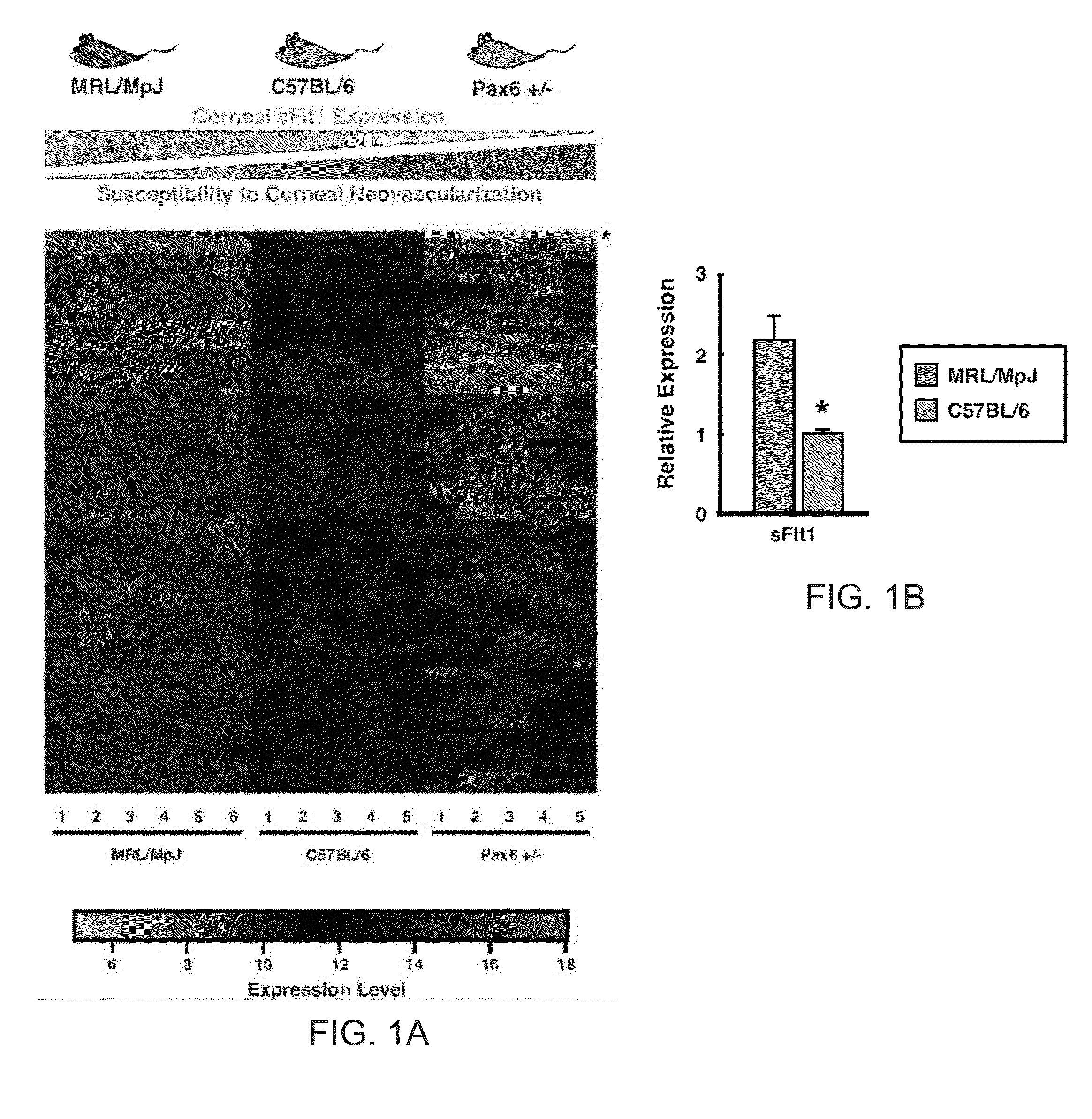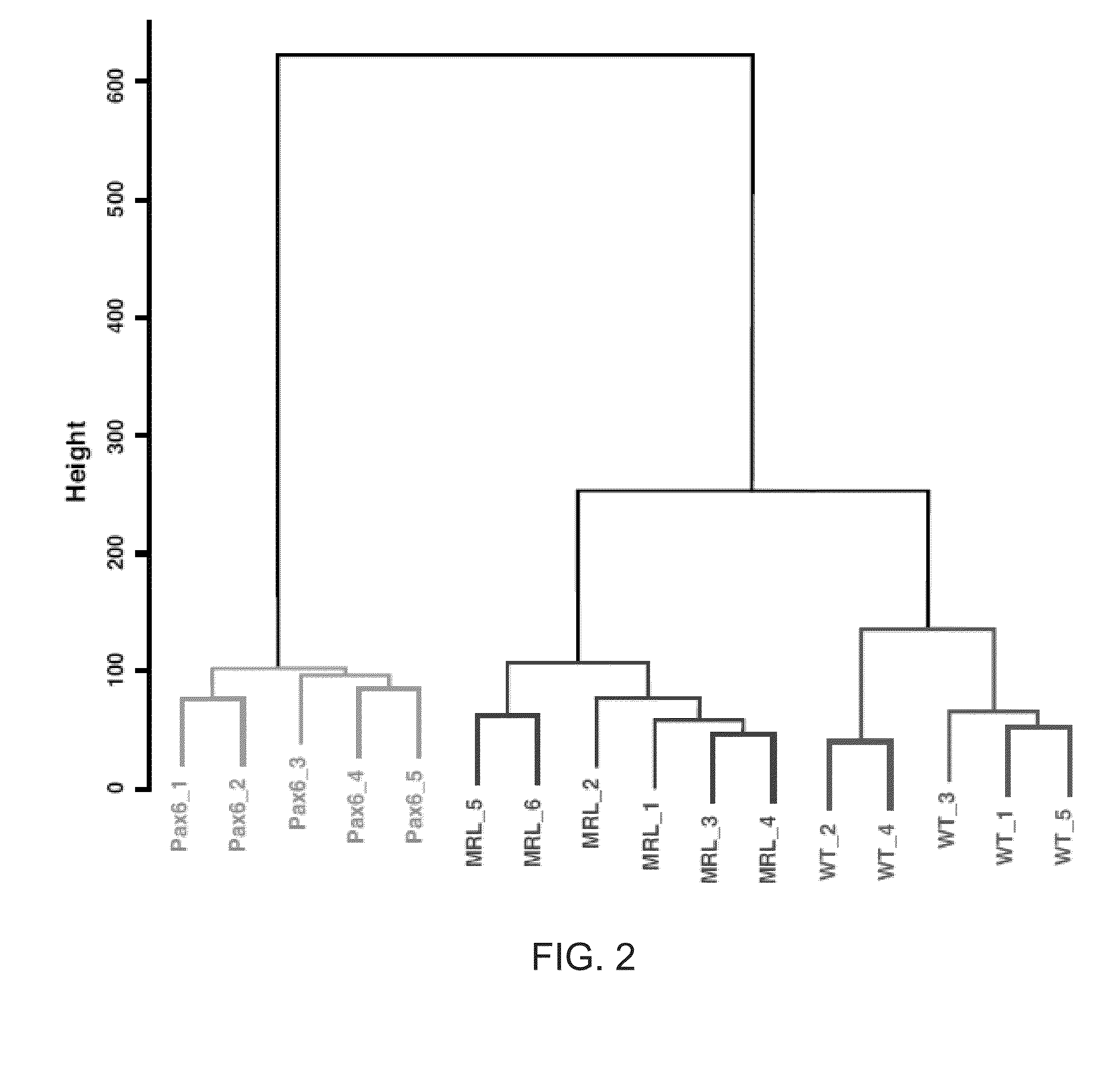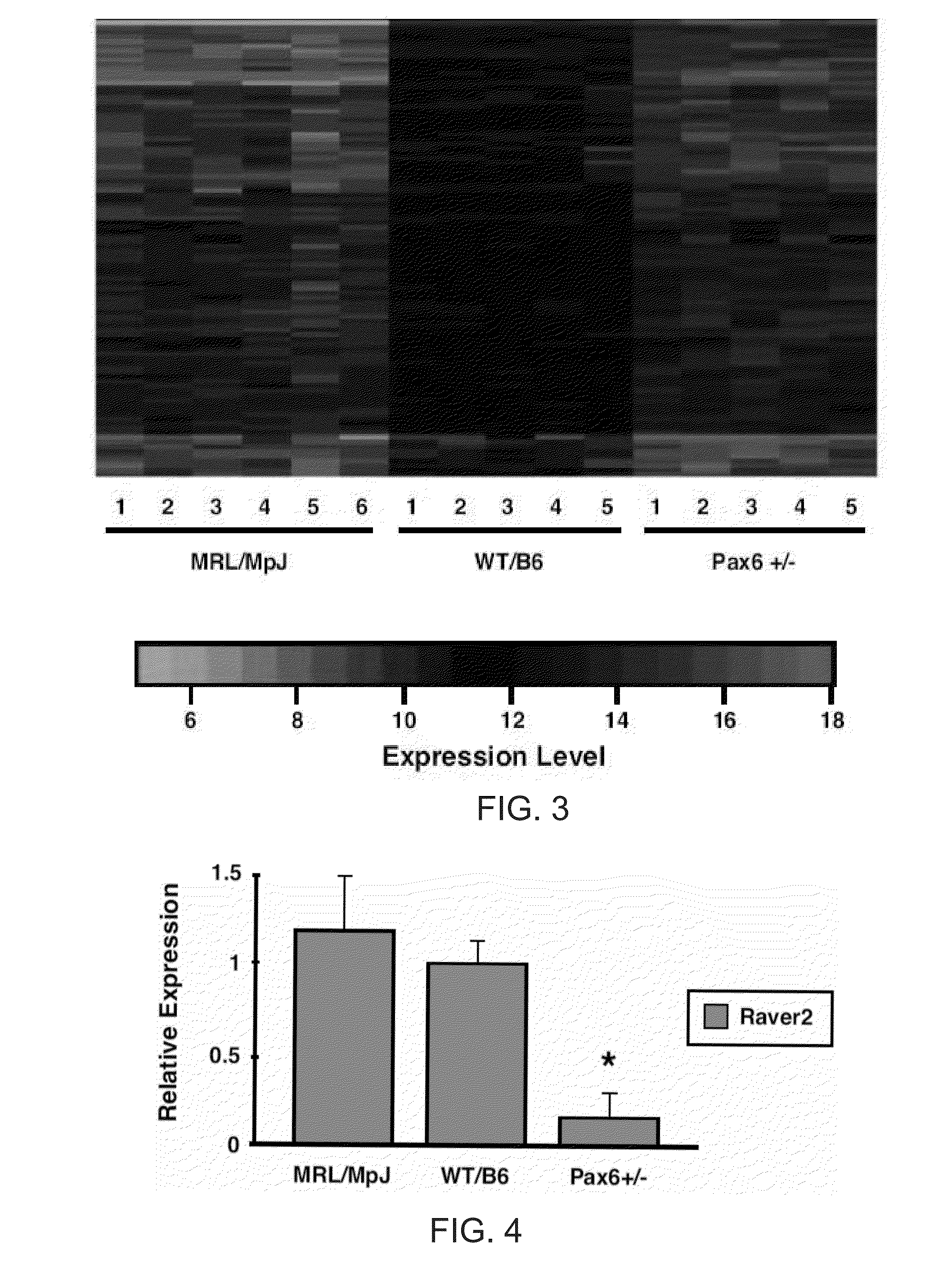Methods of controlling vascularity using raver2 as a mediator for expression of VEGF receptor sfit1
a vegf receptor and raver2 technology, applied in the field of controlling vascularity using raver2, can solve the problems of conical neovascularization, opacification and vision loss, corneal clarity endangered, etc., and achieve the effect of increasing the expression of raver2, increasing the production of soluble vegf receptors, and increasing the expression
- Summary
- Abstract
- Description
- Claims
- Application Information
AI Technical Summary
Benefits of technology
Problems solved by technology
Method used
Image
Examples
Embodiment Construction
[0054]Definitions
[0055]In describing and claiming the present invention, the following terminology will be used in accordance with the definitions set forth below.
[0056]The singular forms “a,”“an,” and, “the” include plural referents unless the context clearly dictates otherwise. Thus, for example, reference to “a receptor” includes reference to one or more of such receptors, and reference to “the oligomer” includes reference to one or more of such oligomers.
[0057]As used herein, “subject” refers to a mammal that may benefit from aspects of the present disclosure. Examples of subjects include humans, and may also include other animals such as horses, pigs, cattle, dogs, cats, rabbits, and aquatic mammals.
[0058]As used herein, an “effective amount” or a “therapeutically effective amount” of a substance refers to a non-toxic, but sufficient amount of the substance, to achieve therapeutic, or otherwise desired results in treating a condition for which the substance is thought to be eff...
PUM
| Property | Measurement | Unit |
|---|---|---|
| Fraction | aaaaa | aaaaa |
| Fraction | aaaaa | aaaaa |
| Fraction | aaaaa | aaaaa |
Abstract
Description
Claims
Application Information
 Login to View More
Login to View More - R&D
- Intellectual Property
- Life Sciences
- Materials
- Tech Scout
- Unparalleled Data Quality
- Higher Quality Content
- 60% Fewer Hallucinations
Browse by: Latest US Patents, China's latest patents, Technical Efficacy Thesaurus, Application Domain, Technology Topic, Popular Technical Reports.
© 2025 PatSnap. All rights reserved.Legal|Privacy policy|Modern Slavery Act Transparency Statement|Sitemap|About US| Contact US: help@patsnap.com



